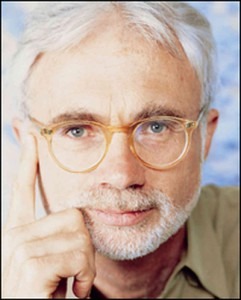
Credit: www.nytimes.com
The scenario, written by Peter Sellars and Alice Goodman, isn’t exactly very nice, and takes full advantage of Madame Mao’s previous reputation as a film star: “Chiang Ch’ing, aka Madame Mao, has gate-crashed the Presidential Banquet. She is first seen standing where she is most in the way of the waiters. After a few minutes, she brings out a box of paper lanterns and hangs them around the hall, then strips down to a cheongsam, skin-tight from neck to ankle and slit up the hip. She signals the orchestra to play and begins dancing by herself. Mao is becoming excited. He steps down from his portrait on the wall, and they begin to foxtrot together. They are back in Yenan, dancing to the gramophone…
Adams: The Chairman Dances, San Francisco Symphony, Edo de Waart (conductor)

John Adams
Credit: www.npr.org
When we consider the scenario, Adams’ music and the dance he chose as its centrepiece, we see that everything is a look back in time: Madame Mao’s position is no longer on the periphery – she puts herself back into the centre. She wears the dress, the qipao or cheongsam, that was popular when she made her name in the world as an actress in Shanghai films. And she does the foxtrot. She dances the most popular dance form of the day – but that day is long gone. You can see this as the signal that all will be changing – once you start to recreate the past, you lose your way to the future.



